10 Best Herbal Tinctures For Allergies
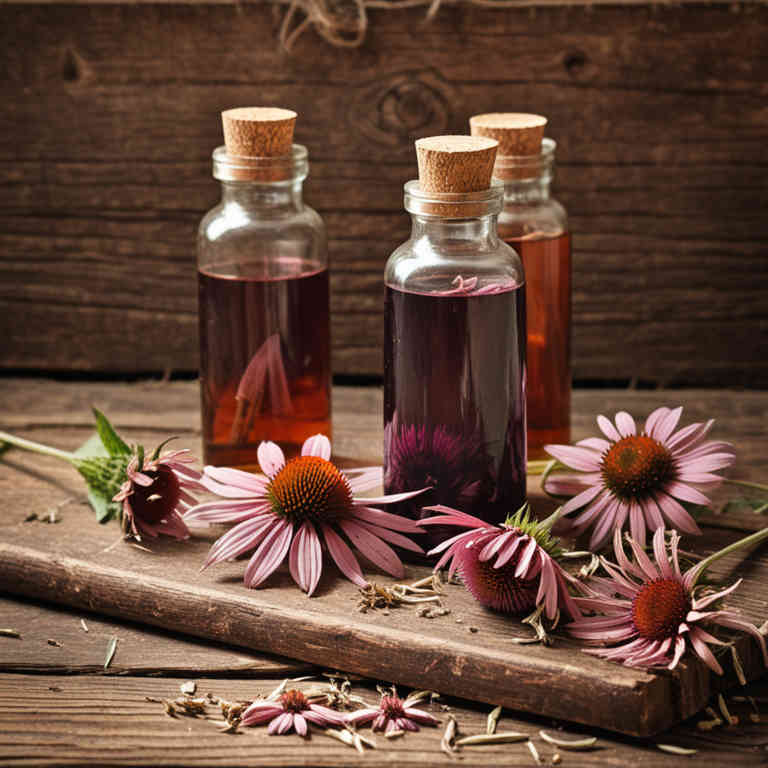
Herbal tinctures have gained popularity as natural alternatives for managing allergy symptoms, offering a holistic approach to wellness.
These concentrated liquid extracts are typically made by soaking herbs in alcohol or glycerin, allowing the active compounds to be easily absorbed by the body. Commonly used herbs in tinctures for allergies include nettle, echinacea, and butterbur, which are believed to have anti-inflammatory and antihistamine properties. While some people find relief from symptoms such as sneezing and nasal congestion, it is important to consult with a healthcare provider before use, especially for those with existing medical conditions or who are taking medications.
As with any supplement, the effectiveness of herbal tinctures can vary, and they should not replace conventional treatments without professional guidance.
FREE COURSE
How to make medicinal herbal tinctures for common ailments at home and in a weekend (using the Healing Drops System).

Table of Contents
1. Urtica dioica
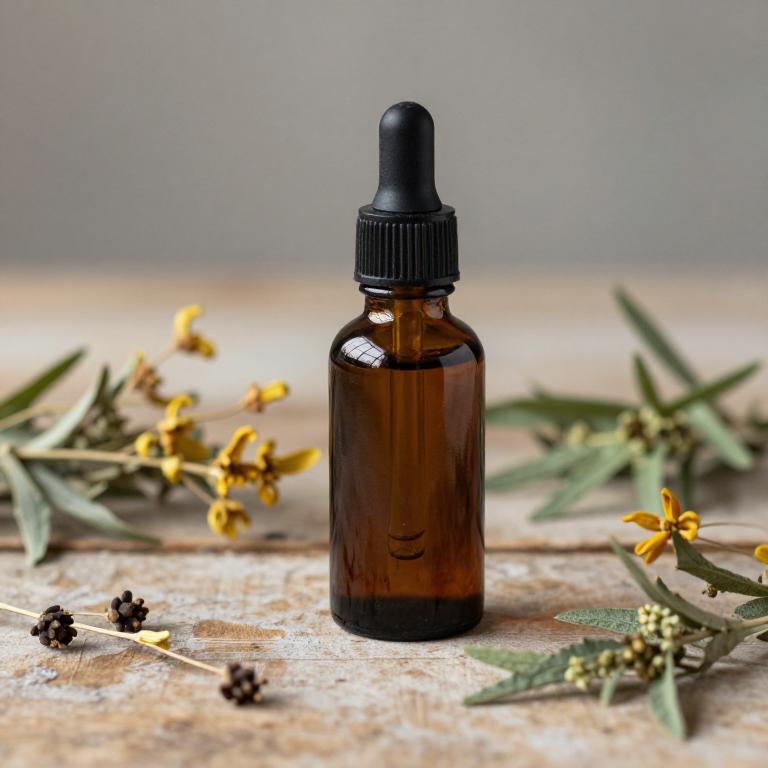
Urtica dioica, commonly known as stinging nettle, has been traditionally used in herbal medicine for its potential allergy-relieving properties.
When prepared as a tincture, Urtica dioica can help alleviate symptoms of seasonal allergies due to its anti-inflammatory and antihistamine effects. The tincture is typically made by soaking the fresh or dried leaves in alcohol, allowing the active compounds to be extracted. Regular use of this tincture may support the body's natural detoxification processes and reduce histamine levels.
However, it is important to consult with a healthcare professional before starting any new herbal regimen, especially for individuals with existing health conditions or those taking medications.
2. Echinacea purpurea
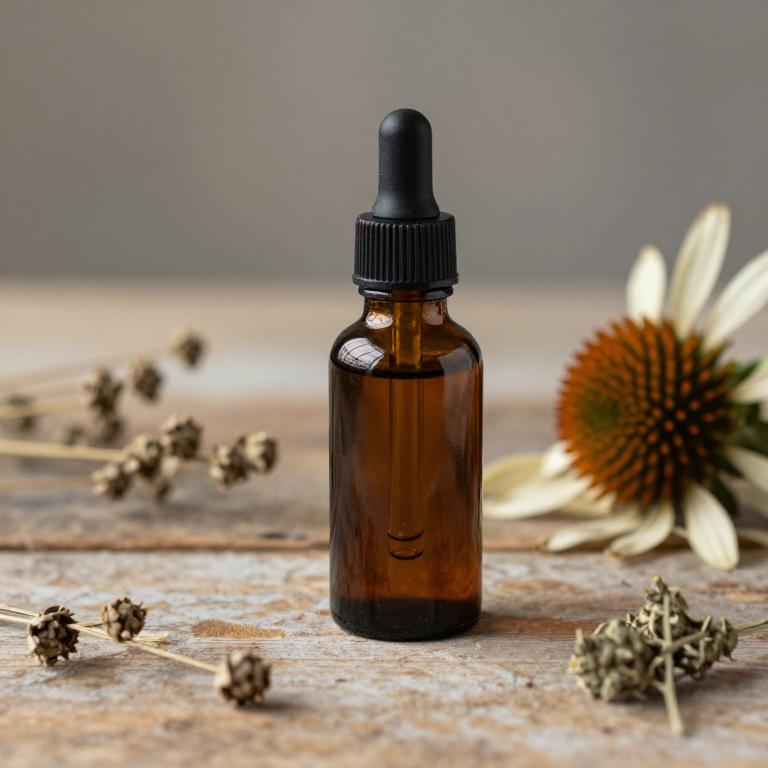
Echinacea purpurea, commonly known as purple coneflower, is a popular herbal remedy often used to support the immune system.
Its tincture form is widely available and typically made by soaking the dried herb in alcohol to extract its active compounds. Some people use echinacea tinctures to help alleviate allergy symptoms, although scientific evidence on its effectiveness for allergies remains inconclusive. While some studies suggest it may reduce the duration of colds, more research is needed to confirm its benefits for allergic conditions.
As with any herbal supplement, it is advisable to consult a healthcare provider before use, especially for those with allergies or taking other medications.
3. Hypericum perforatum
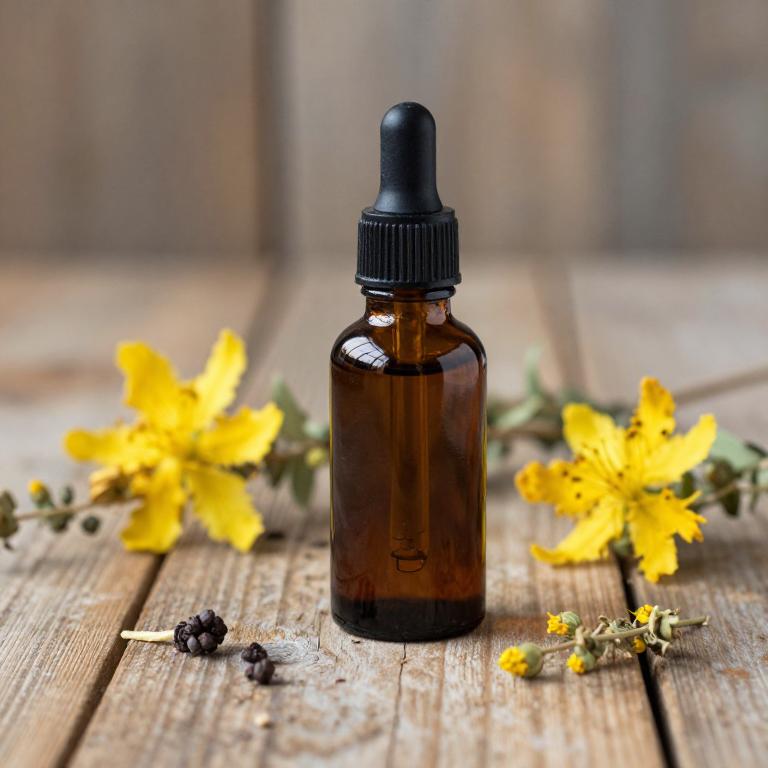
Hypericum perforatum, commonly known as St. John's Wort, is a herbal plant that has been traditionally used for its potential therapeutic benefits.
While it is well-known for its use in treating mild depression, it also shows promise in alleviating allergy symptoms due to its anti-inflammatory and antihistamine properties. Hypericum perforatum herbal tinctures are typically made by soaking the dried plant material in alcohol to extract its active compounds, such as hypericin and hyperforin. These tinctures may help reduce nasal congestion, itching, and sneezing associated with seasonal allergies by modulating the body's immune response.
However, it is important to consult with a healthcare provider before using St. John's Wort, as it can interact with certain medications and may not be suitable for everyone.
4. Plantago lanceolata
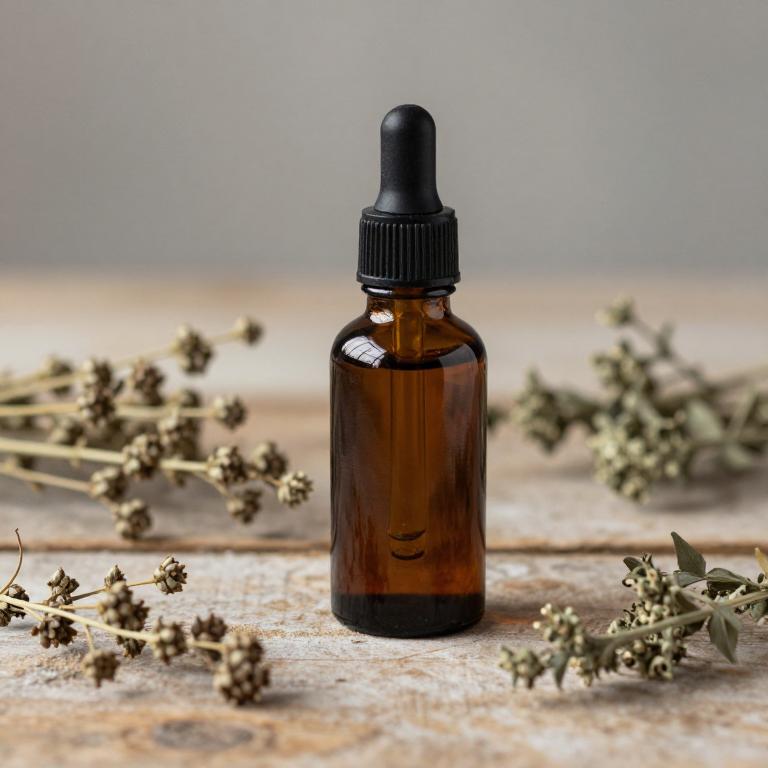
Plantago lanceolata, commonly known as broadleaf plantain, has been traditionally used in herbal medicine for its soothing and anti-inflammatory properties.
Herbal tinctures made from Plantago lanceolata are often prepared by soaking the dried leaves in alcohol to extract their active compounds, such as mucilage and flavonoids. These tinctures are believed to support respiratory health and may help alleviate symptoms of allergies by reducing inflammation and mucus production. Some individuals use Plantago lanceolata tinctures as a natural alternative to conventional allergy medications, though they should not replace professional medical advice.
It is important to consult with a healthcare provider before using herbal tinctures, especially for those with existing health conditions or taking other medications.
5. Artemisia vulgaris
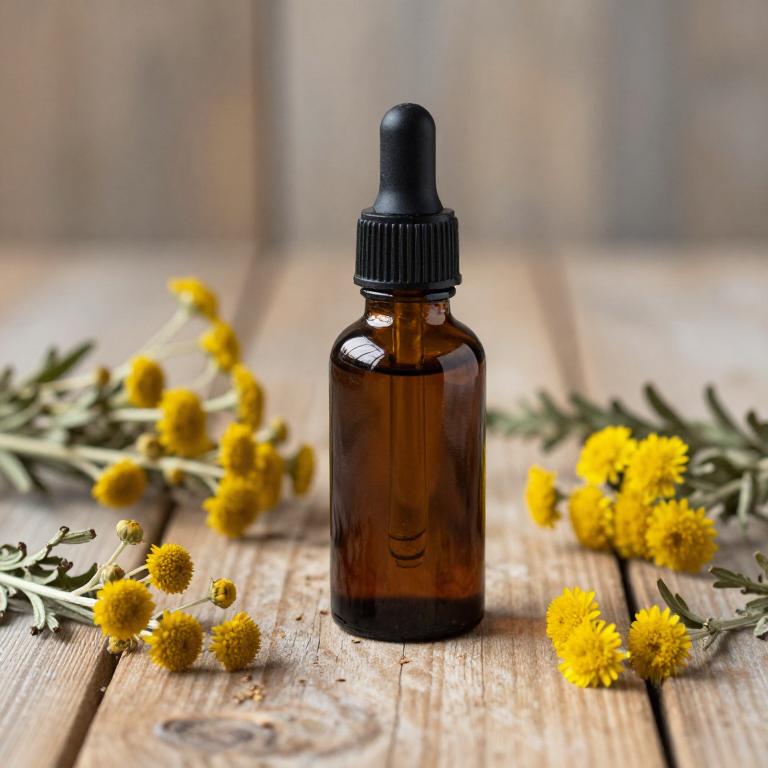
Artemisia vulgaris, commonly known as wormwood, is a perennial herb that has been traditionally used in herbal medicine for its potential benefits in alleviating allergy symptoms.
Its tinctures are often prepared using alcohol as a solvent to extract the active compounds, such as volatile oils and flavonoids, which are believed to have anti-inflammatory and antihistamine properties. Some studies suggest that artemisia vulgaris may help reduce allergic reactions by modulating the immune system and decreasing histamine release. However, it is important to note that while it shows promise, more research is needed to fully understand its efficacy and safety for allergy treatment.
As with any herbal remedy, it should be used under the guidance of a qualified healthcare professional.
6. Achillea millefolium
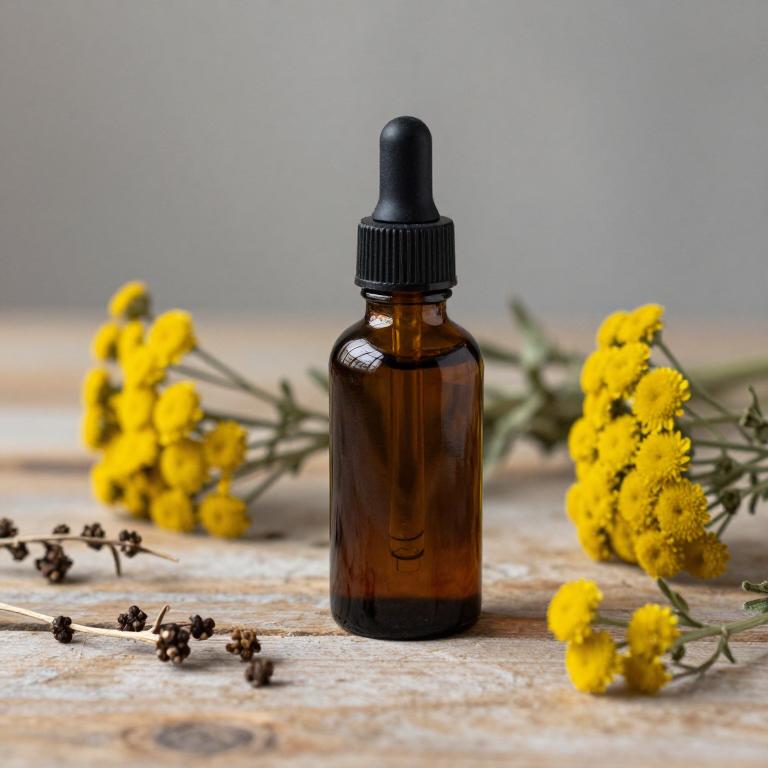
Achillea millefolium, commonly known as yarrow, has been traditionally used in herbal medicine for its anti-inflammatory and antihistamine properties, making it a potential remedy for allergy symptoms.
When prepared as a tincture, Achillea millefolium can be taken internally to help reduce histamine release and alleviate nasal congestion, sneezing, and skin rashes associated with allergic reactions. The tincture is typically made by soaking the dried plant material in alcohol, which extracts the active compounds such as flavonoids and essential oils. It is often used in conjunction with other herbal remedies to support the body's natural defenses against allergens.
However, it is important to consult with a healthcare professional before using yarrow tinctures, especially for individuals with existing medical conditions or those taking medications.
7. Chamomilla recutita
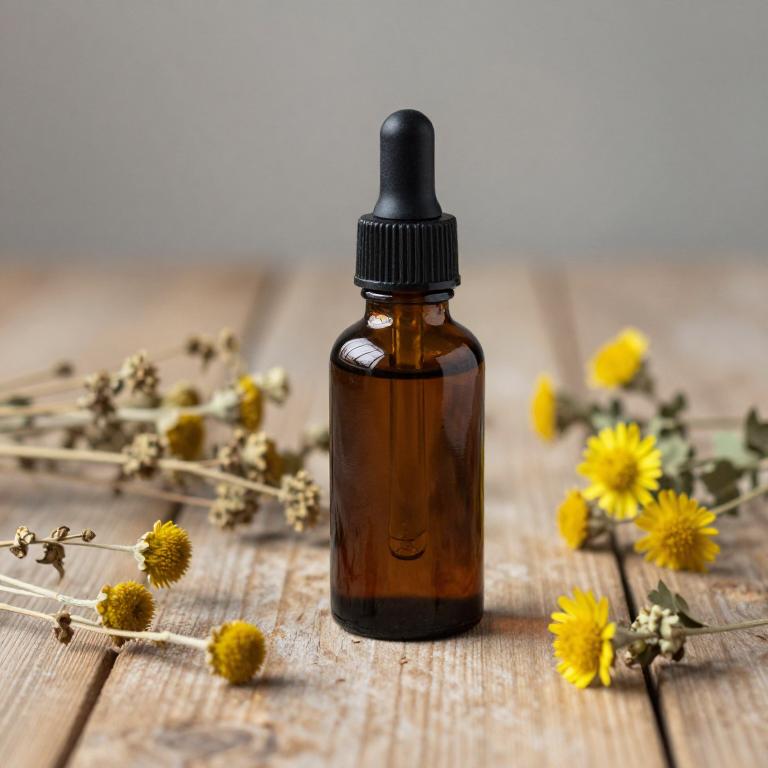
Chamomilla recutita, commonly known as German chamomile, is a popular herb used in the preparation of tinctures for managing allergy symptoms.
These tinctures are made by extracting the active compounds from the dried flowers of the plant using alcohol, which helps preserve the medicinal properties. Chamomile tinctures are valued for their anti-inflammatory and antihistamine effects, which can help reduce nasal congestion, sneezing, and skin rashes associated with allergic reactions. They are often used as a natural alternative to conventional antihistamines, particularly for mild to moderate allergies.
However, individuals with allergies to ragweed or other plants in the Asteraceae family should use chamomile tinctures with caution, as cross-reactivity is possible.
8. Thymus vulgaris
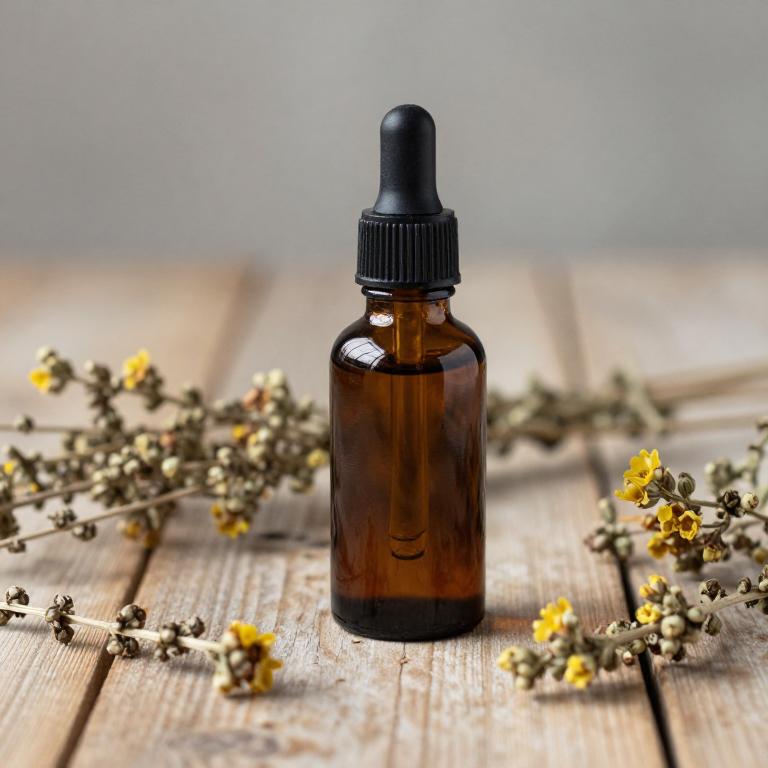
Thymus vulgaris, commonly known as thyme, is a popular herb used in herbal medicine for its potent antihistamine and anti-inflammatory properties.
Thymus vulgaris herbal tinctures are often utilized to alleviate symptoms of allergies such as sneezing, runny nose, and itchy eyes by supporting the body's natural immune response. These tinctures are typically prepared by soaking fresh or dried thyme in alcohol to extract its active compounds, including thymol and carvacrol, which have been shown to reduce histamine release. Due to their natural composition, thymus vulgaris tinctures are considered a safe and alternative option for individuals seeking non-pharmaceutical relief from allergic reactions.
However, it is important to consult with a healthcare professional before use, especially for those with existing health conditions or who are taking other medications.
9. Salvia officinalis
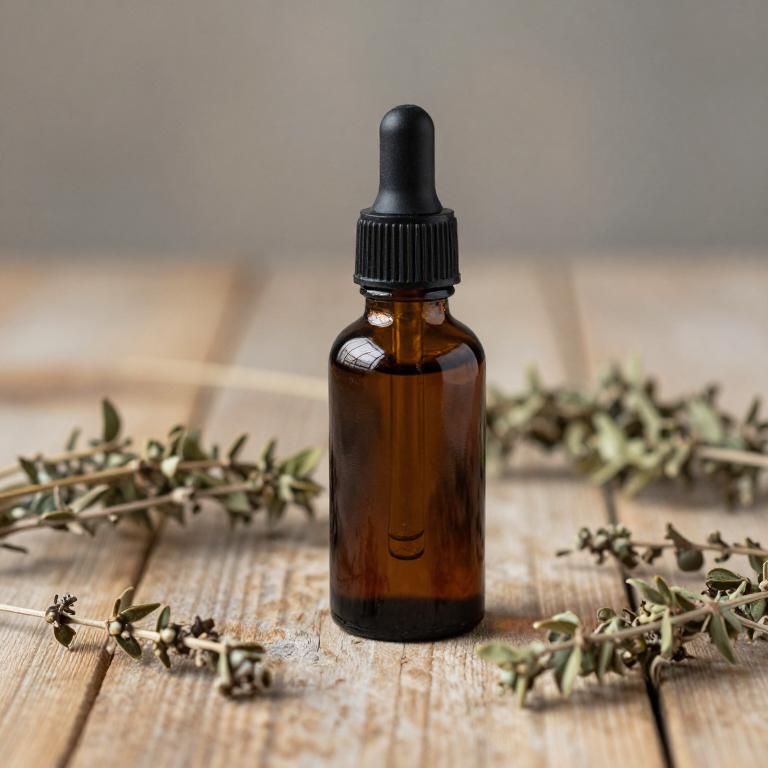
Salvia officinalis, commonly known as sage, has been traditionally used in herbal medicine for its potential benefits in managing allergy symptoms.
Sage tinctures are concentrated liquid extracts made by soaking the dried leaves in alcohol, which helps preserve the plant's active compounds. These tinctures may help reduce inflammation and support respiratory health, which can alleviate symptoms like sneezing and congestion. Some studies suggest that sage contains compounds with antihistamine properties, which could help regulate allergic responses.
While more research is needed, many people use sage tinctures as a natural alternative or complement to conventional allergy treatments.
10. Vaccinium myrtillus
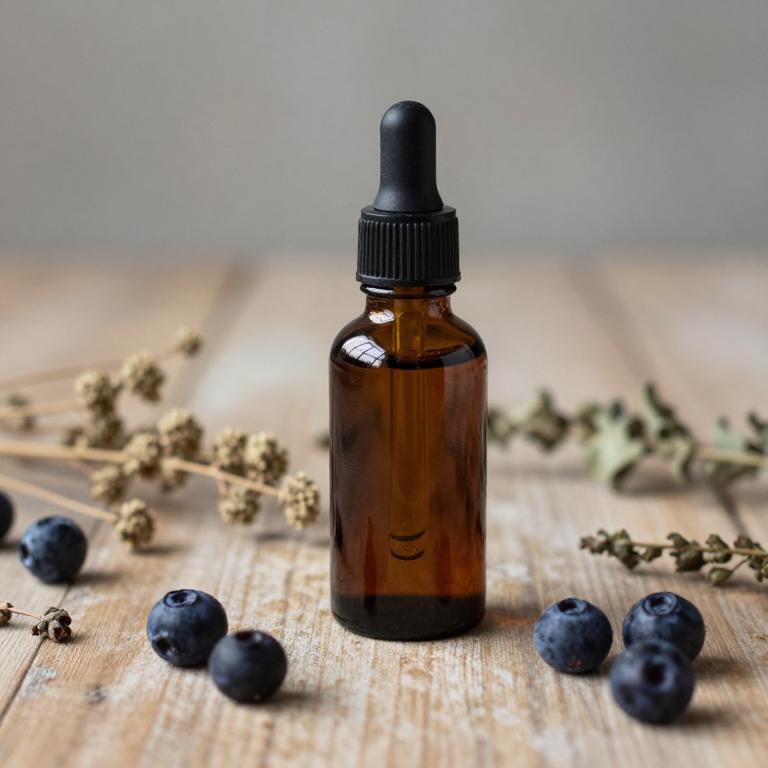
Vaccinium myrtillus, commonly known as blueberry or bilberry, has been traditionally used in herbal medicine for its potential health benefits.
While primarily recognized for its antioxidant properties, Vaccinium myrtillus tinctures are sometimes used to support immune function and may help alleviate allergy symptoms. The tinctures are typically prepared by extracting the leaves and berries with alcohol, preserving the active compounds that may have anti-inflammatory effects. Some proponents suggest that these tinctures can help reduce histamine levels, potentially easing allergic reactions.
However, it is important to consult with a healthcare professional before using Vaccinium myrtillus tinctures, as they may interact with medications or have side effects for certain individuals.